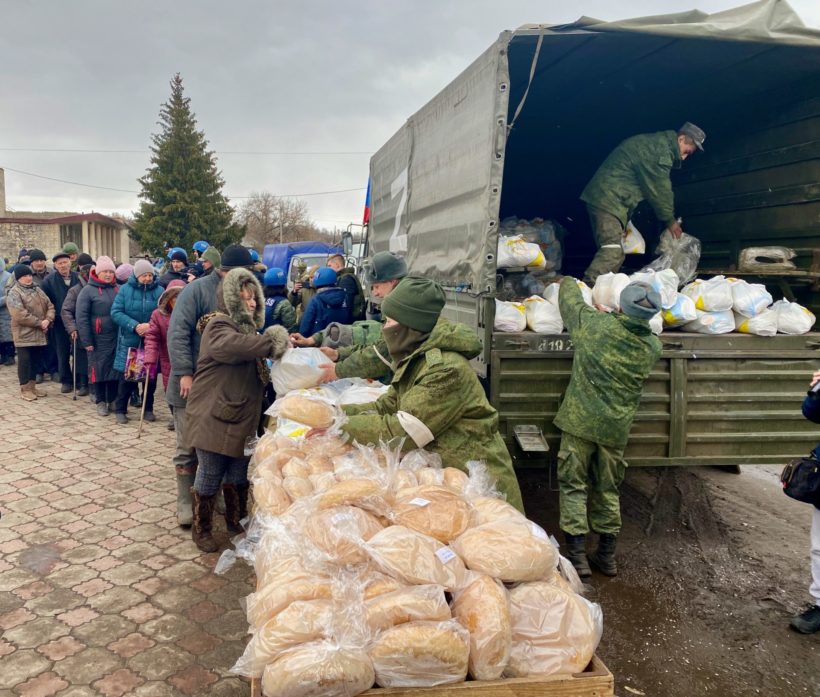A traveler crossing the vast steppes of south-eastern Europe, of what used to be the USSR, would not differentiate its Russian part from the Ukrainian part, neither by the natural nor by the human landscape. The name of these lands, Donbass, is the abbreviation of the “Donets Basin”, after the river that runs through it, and represents a mining and working-class territory, the area of huge coal deposits and the historical centre of the metallurgical industry, when Ukraine, still Soviet, was the main steel producer in Europe.
Report and photos by Oleg Yasinsky
If we delve a little deeper into history, we will see in these places the traces of the cavalry of the civil war between the Reds and Whites a little more than a century ago, and going back a little further, we will hear the cries and chants of the Cossacks who, fulfilling the will of Tsarina Catherine the Great, in exchange for her promise of freedom and autonomy, moved from the rebel republic of Zaporozhskaya Sech (now Ukraine) to the North Caucasus to take over the defence of the southern border of the Russian Empire. It was here that the geographical division within the Cossack culture was formed, another example of the enormous closeness between two neighbouring peoples, although those on the Ukrainian side are called “Cossacks” and those on the Russian side “Kashacks”, but they are united by the same words, the same songs and the same memories.
The most recent past of the Donbass, that of the Second World War, which for us will always be the Great Patriotic War, is associated with the history of the “Young Guard”, a clandestine communist youth organisation that resisted the Nazi occupation and at the end of the war was denounced, seized and after brutal torture, shot.
It is an infinite, peaceful, multi-coloured, multi-temperature land, open to the winds, which seems to attract by its richness and its location, it is appetizing for everyone.
Now the word Donbass is repeated in the media, this time as the name of the epicentre of a war in the heart of Europe. The main part of the Donets Basin has belonged to Ukraine. Almost all of its population, however, has been from Russian families or from the area where Ukrainians have always spoken Russian and culturally have little to do with the western regions of the country. When Ukraine was a bilingual and peaceful country, when it was one of the Soviet republics and until the first decades of its independence, no one here bothered to revise maps and historical borders. In the midst of enormous cultural, linguistic and religious diversity within the republics of the former USSR, we all understood that there were many more things that united us and that there were no closer peoples in the world than Russian and Ukrainian, which many considered inseparable parts of the same people. Dondass was the last frontier and the point of confluence between the two.
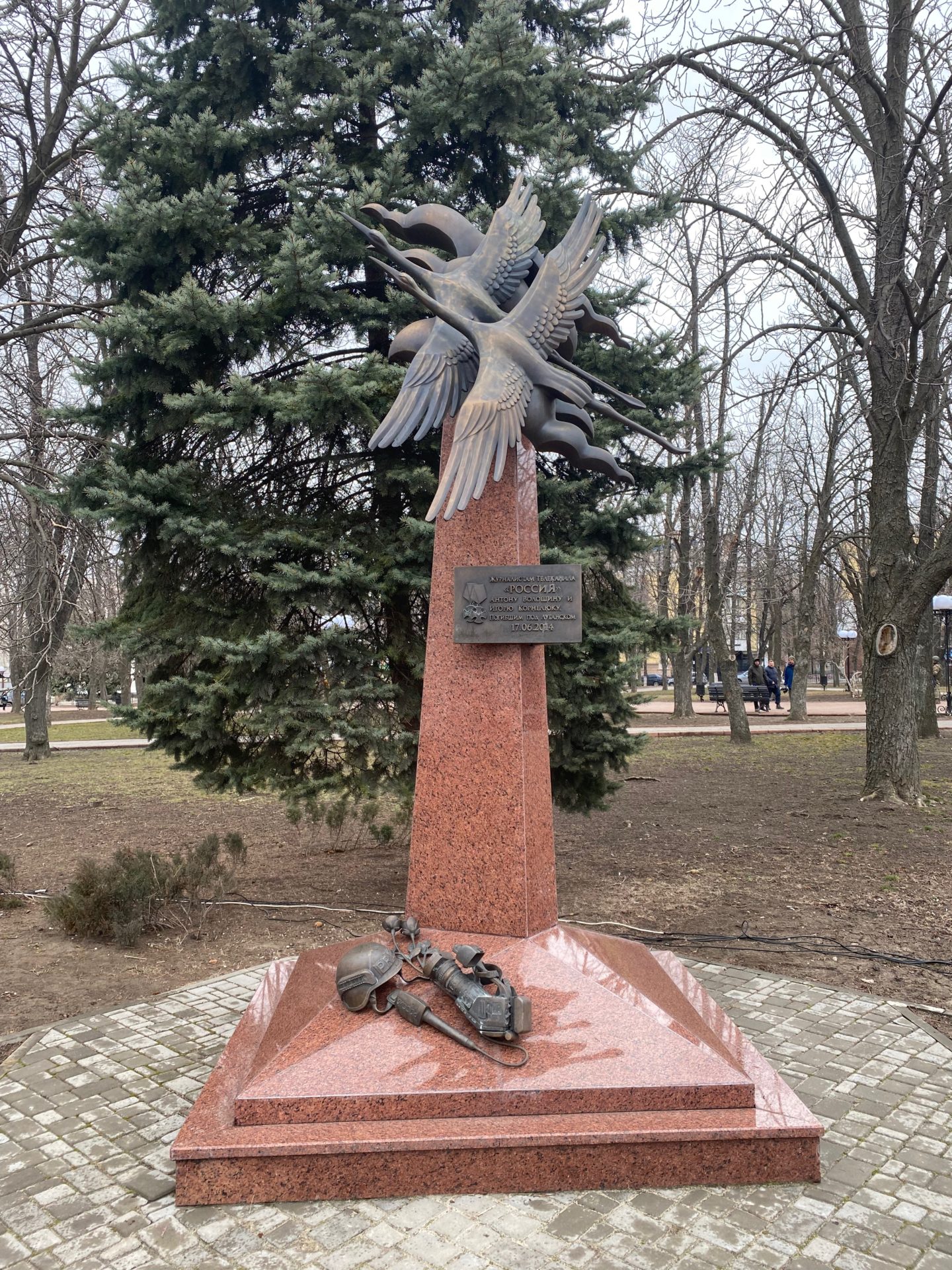
Everything changed in February 2014. The coup d’état in the Ukrainian capital Kiev, publicised worldwide as the “Maidan Revolution”, brought the forces of the nationalist far right to power. The project of the new authorities was to impose their unique anti-Russian, pro-Western and extremely anti-communist agenda on everyone and at all costs, and anyone who disagreed was declared a traitor, a separatist or an agent of Putin. Faced with the disobedience of the Donbass population to the orders of the new government in Kiev and the massive disregard for its legitimacy, a real civil rebellion (a kind of “anti-Maidan”) ensued. The nationalist government in Kiev, on 14 April 2014, started the “Anti-Terrorist Operation” by attacking the rebel territories with all its military might. The people of Donbass, as best they could, with and without Russian military and logistical assistance, resisted. Two independent people’s republics were proclaimed: Donetsk and Lugansk, named after their municipal capitals. Until 22 February 2022, Russia did not recognise the independence of these republics, giving the Ukrainian government the opportunity to integrate them into the country, in compliance with the Minsk Agreements signed by Ukraine in 2014, which provided for a solution to the armed conflict without losing these territories. The possibility of cultural autonomy was planned, returning Russian to the status of the state language in this region, where it is native to all: Russians, Ukrainians, Jews and dozens of other nationalities.
During almost 8 years of war in Donbass, which had its hot and cold phases, various human rights bodies remained deaf and blind to hundreds of complaints from the rebel republics about the killings and torture of thousands of civilians by the Ukrainian army. And much more than the regular army, the sowers of terror were the paramilitary battalions of the Ukrainian far right: “Azov”, “Aydar”, “Dnepr” and others.
From the street paramilitarism of the Maidan upheaval, they became part of the Ukrainian Ministry of Defence and became the main shock groups of the Ukrainian armed forces in Donbass. In the territories under Ukrainian control they created real concentration camps and torture centres for imprisoned rebels and civilians suspected of sympathising with Russia.
When the fighting in Donbass ended with the Minsk agreements, never honoured by Ukraine, the warring parties reached a line of armed division in the Donetsk and Lugansk region. Although the regional capitals and their surroundings came under rebel control, almost 2/3 of the territory of the Ukrainian Donbass was controlled by the Kiev government and the military forces, supported by the far-right battalions, which were installed there as an army of occupation.
In almost 8 years the independent republics, despite all the support from Russia, which the Ukrainian government always presented as an invasion and interference in their internal affairs, were not politically recognised by any country in the world, many of their inhabitants opted to leave for Ukraine and Russia and those who remained obtained passports that were not valid outside and the economic situation in the region continued to worsen. In recent years, before the recognition of the republics on 22 February, the Russian government facilitated the process of granting Russian citizenship to all interested Donbass residents, provoking a furious reaction from Kiev. Hopes of reintegrating these territories still remained in Ukraine, as the Kiev government had only to start implementing the Minsk agreements. Meanwhile, NATO was stuffing Ukraine with the latest weapons, its trainers were training the army and paramilitaries to kill, and all the media, round the clock, were sowing hatred towards Russia.
In mid-February this year the situation in Donbass changed. Ukrainian artillery opened heavy fire on the rebel territory causing dozens of civilian deaths. Evacuation of children to Russia was declared. Putin recognised the independence of the republics, ending the long wait for the fulfilment of the Minsk agreements, the Russian parliament approved the use of troops abroad. The governments of the rebel republics demanded the immediate withdrawal of Ukrainian troops from the entire territory of Donbass. In the face of the predictable Ukrainian refusal, Russian and Donetsk and Lugansk forces, on the night of 24 February, attacked military installations throughout the territory of Ukraine and ground forces entered, along almost the entire border.
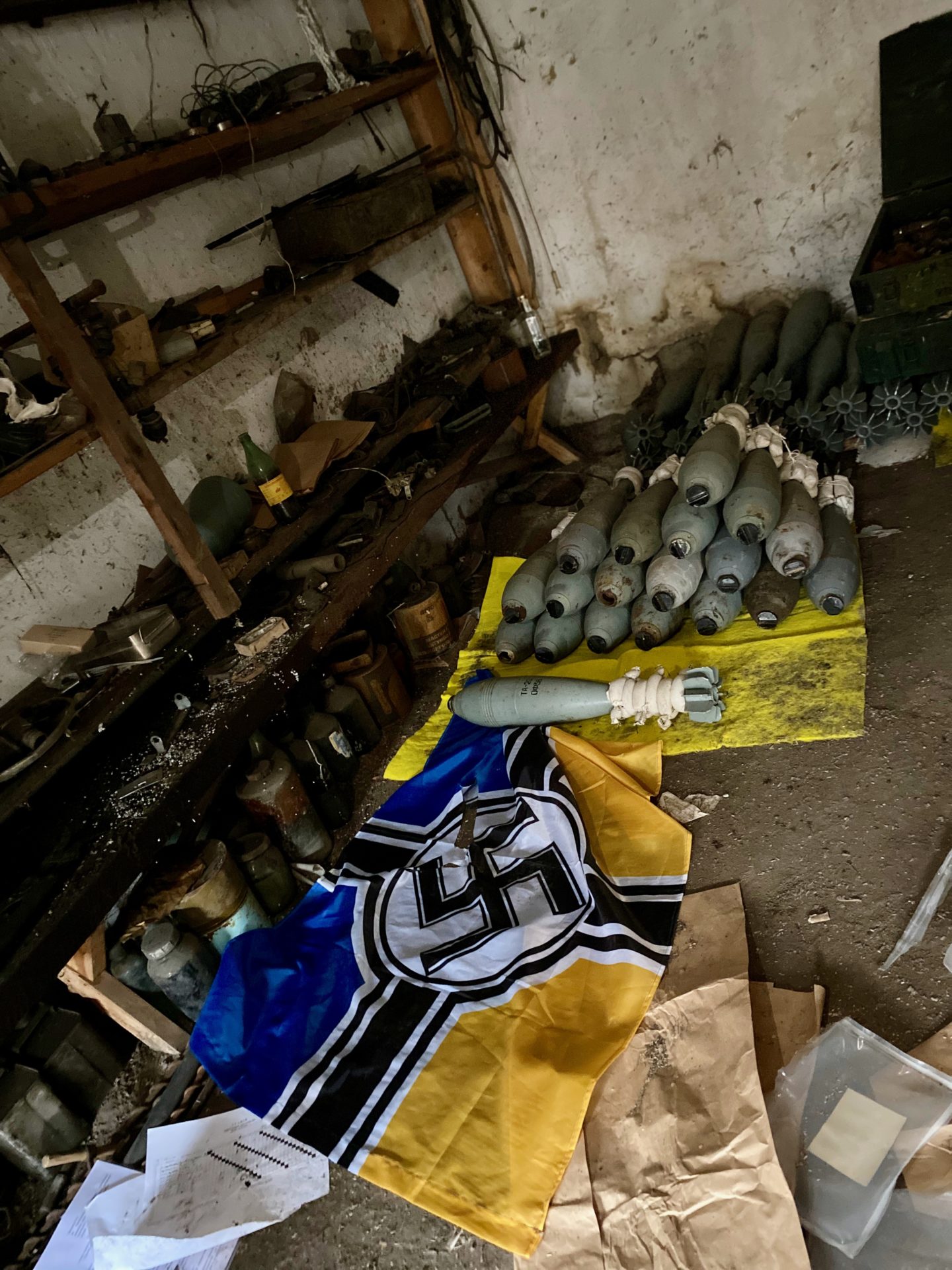
The world’s media immediately mounted an unprecedented anti-Russian campaign. If only all the wars of recent decades had had a tenth of the pacifist fervour of this one. It is the first military operation launched, not by the Western powers, but against their most loyal subject in Europe. It is legitimate to be against war, but one would have to be very naive to believe that the US, Britain and their allies, by applying all kinds of sanctions against Russia and showing the world their version of the tragedy, are really seeking to defend any of the values they have systematically trampled on throughout their history. There is a media campaign prepared with much calculation and in advance, and rather than pacifism, its aim is to dehumanise Russia and everything Russian, preparing the ground in the world’s collective subconscious to do away with this country, seeing it as the source of all problems for “the civilised world”.
The Negro magic of war changes the colours and perceptions of reality. With the first Russian missiles downed in Ukraine, its president – a swindler, criminal, clown and Nazi accomplice – became a national hero. Volodymyr Zelensky finally does the only thing he knows how to do well: act. Media control, multiplied by fear and ignorance, makes people forget everything. And “the civilised world”, as never before, “supportive and pacifist”, is “in solidarity” with Ukraine by sending it tons of arms and ammunition, encouraging more deaths and demonising Chekhov, Tchaikovsky, Gagarin and other “voters” of Putin.
Since the war in Yugoslavia we know that “smart missiles” are never that smart, and yes, many children and civilians have been killed and even the duped Ukrainian military are also victims and that is terrible and understandable. But perhaps the worst lie of the world’s media is to insist that the “Russian aggression is unprovoked”. This war was being sought, provoked and called for every minute since the triumph of the Maidan coup. It was not the dwarf Zelensky and his paramilitary guards, it was the masters of their power, who in their inner circles, taking off their pacifist masks, congratulate themselves on the fulfilment of their great dream: the Slavs killing each other, because to indulge their appetites they must vacate these huge territories, with their immense wealth in order to reach the northern border of China. A big party outside the cameras and their crocodile tears.
Ukrainians to them are the same Russians, just a more tame subspecies. Maybe talking about civilian casualties in Ukraine it would be fair to talk about them all once and for all. Thousands dead in this war and hundreds of thousands dead from the social disaster planned and organised by this government that now lies so much about independence and sovereignty. The systematic destruction of the Ukrainian health care system is just one example of the economic genocide against pensioners, the sick and other “non-productive” sectors under the orders of the IMF.
It was killing how many people a day? How many thousands of kilometres away from Kiev were these decisions taken to impose on the administration of the spoils of war called Ukraine? An award that today raises the flags of patriotism and cries for “defence of its independence” in the face of an “unprovoked attack”.
For some time now, the simplest and most accurate way to explain the realities of Ukraine in Latin America has been to speak of a Colombia in the heart of Europe. A beautiful and very rich country, with an unbeatable strategic location, converted by its sell-out elites into a banana republic of the US, with a formal democracy based on strict control of the media, the dismantling of the state’s social obligations, the destruction of memory, an imposition of a false history and paramilitary groups at the service of power to intimidate and silence the few dissenting voices. Russia – the closest and most culturally, humanly, economically and historically inseparable country to Ukraine – was declared the main enemy of its people.
It is well known that our ideas and convictions are based more than anything else on our emotions. Emotions are a reaction of our consciousness to the signals that come to us from our senses. Approximately 90% of the world’s information we receive through our eyes. Today’s media dictatorship is practically unlimited. In today’s information wars, a direct lie is a tool of the past. A correct distribution and dosage of truths is much more efficient. All those who have had the experience of placing their products in a supermarket know that the price for placing them on certain shelves, where they are better seen, can be several times higher, but economically it is always compensated. On the shelves of today’s media, there is practically everything, but for the most valuable information we always have to go to the dusty back shelves or behind the curtains of other people’s advertising, while all the junk food is always on display for all to see and at a discount. The demand for these important truths is usually quite low, as it implies another level of attention and general education of the citizen-customer, things we are taught everywhere to unlearn. It is our civilised western culture based on drugs, pharmaceuticals and alcohol, which constructs this perception of reality as a comic book or pop music theme, the system cultivates and reproduces its cannon fodder of the highest quality, full of patriotism, national pride and the respective little flags sponsored and handed out by corporations and oligarchs.
The people in Donbass are different. The best achievement of the great Soviet civilisation was the humanity of the people who lived through it. People who are simple, true, close, who do not pretend, who know how to look people in the eye, who do not talk too much and do not pretend to be something they are not. I felt I was among such people only in two places: in Siberia and in Donbass. In Ukrainian nationalist discourse the people of Donbass are derogatorily called “vatnik”. “Vata” is Russian and Ukrainian for cotton, and “vatnik” is a cotton coat, typical simple and coarse clothing of Soviet workers. From the classism and careerism of the Kiev “middle class” that supported nationalism, “Soviet ordinariness” in Donbass was tantamount to backwardness and prevented the country from moving towards “European civilisation”. They are also called “separatists” or “separatists”. It is curious that those who really divided and tore Ukraine apart, making it unlivable for the great cultural diversity that the region always represented, accuse those who rebelled against it of being separatists.
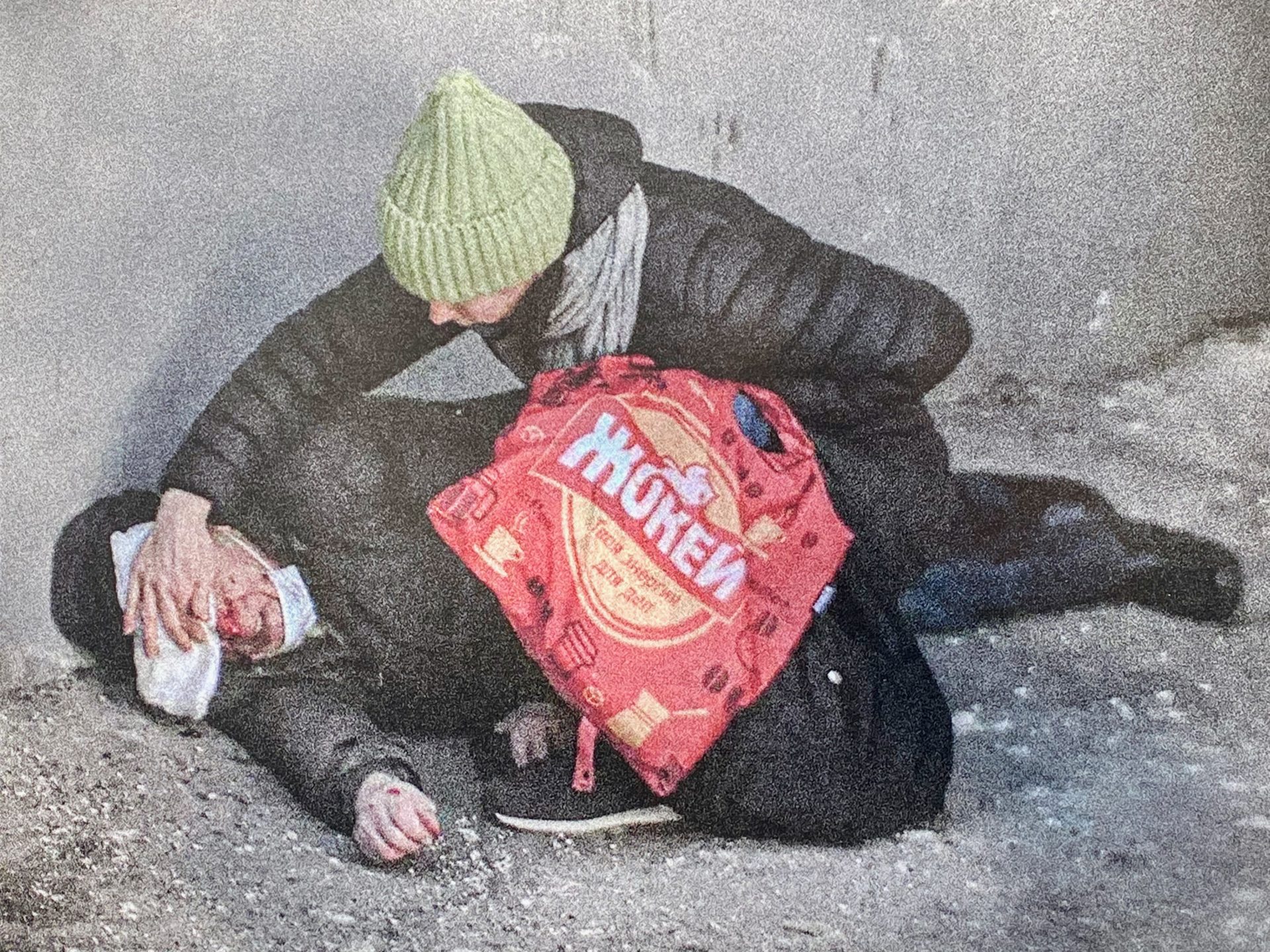
It was strange to see my country as if it had been removed from the chronicles of World War II, but in colour. Endless unplanted fields, stained with craters from mines and tank shells. Tens of kilometres of strips of trees along the roads, their branches, bark and trunks shredded by shrapnel and heavy machinery crashes. The burnt-out tanks, trucks and buses between the military checkpoints and the old signs indicating the distances to different peacetime points, still in Ukrainian.
On 14 March this year, at 11:31, the centre of Donetsk was rocked by an explosion. It was a Ukrainian missile “Point U”, shot down by the Republic’s anti-aircraft defences. These missiles are intended to destroy heavy technology, which does not exist in the centre of Donetsk. According to its calculated trajectory, “Point U” was heading towards a shopping centre, which was crowded at this time of day. The missile debris landed next to the government building near a bank, where a queue of people were waiting for their turn at the cash machine. Twenty-one were killed and more than 30 injured, including several children. Fortunately a playground next door was empty at the time. This is missile number 15, shot down over Donetsk. “Point U” is a cluster weapon. Each missile contains 50 devices, and inside each one are some 316 shrapnel fragments that are dispersed over a radius of up to 400 metres. In this case, happily (if that is the word), only one of these 50 devices was opened. The Kiev authorities claimed that the missile was fired from Russia as a provocation against Ukraine. For the world’s major news outlets, the news went virtually unnoticed.
Gorlovka, a small town near Donetsk, one of the sad symbols of this war that began here in 2014, in the 50th school a little over a month ago a projectile landed in the middle of the working day, killing two teachers who were planning classes. Next to their death, a text of a chronicle in Ukrainian, recalling the importance of the light of the wisdom of books.
Between Donetsk and Mariupol, the important city on the coast of the Sea of Azov, where the heaviest fighting of this war now continues, lies, or rather, was, Volnovaja. In 2014 its population was 23,164.
The official Ukrainian version, which can be found on Wikipedia in English, says that the fighting for Volnovaja started on 25 February and ended on 12 March 2022 and was between the Armed Forces of Ukraine, the Armed Forces of Russia and the “Donbass Separatists” (whose official name is the Army of the People’s Republic of Donbass!). Wikipedia tells us: “During the first days of the Russian invasion of Ukraine in 2022, Russian forces engaged in indiscriminate shelling of Volnovaja and Shchastia, shelling civilian areas. The terrorist shelling of the cities violated international law and echoed tactics Russia had previously used against civilian targets in Syria. Volnovaja was reported to be on the brink of a humanitarian crisis on 28 February, and almost destroyed on 1 March, with around 90% of its buildings damaged or destroyed. Surviving residents were cut off from food, water and electricity After the assault, bodies lay uncollected in the streets.”
Wikipedia lies. We were in Volnovaja a few days afterwards. I don’t know whether 90% of the city was destroyed, as some say, or 85%, as other sources claim, but the city no longer exists. We met dozens of survivors and what they ALL tell us is that it was the Ukrainian army that destroyed Volnovaja. Retreating from the town under pressure from the Russians, they put tanks in front of every building and fired. They destroyed the clinic and the school, looted the houses and shops. The population could not leave because the Ukrainian military would not let anyone leave, using civilians as human shields. The same tactic is now being repeated in Mariupol. That is why the population of Volnovaja, previously divided without major fanaticism between pro-Russian and pro-Ukrainian, now ALL welcomed the Russian army as their liberators. The Russian and Donetsk military hand out food and water, while the people of this ghost town beg them not to abandon them.
From Volnovaja to Mariupol is 66 kilometres. For time and security reasons we could not get to Mariupol, but everyone – civilians and military – kept talking about this, probably to this day the biggest drama of this war. Many people have friends and relatives in Mariupol. Mariupol is one of the main cities in Donbass, it has almost half a million inhabitants and is a port with access to the Mediterranean, so control over this city is key. It is also the largest concentration place in the country of the Azov paramilitary group, which practically controls the Ukrainian army here.
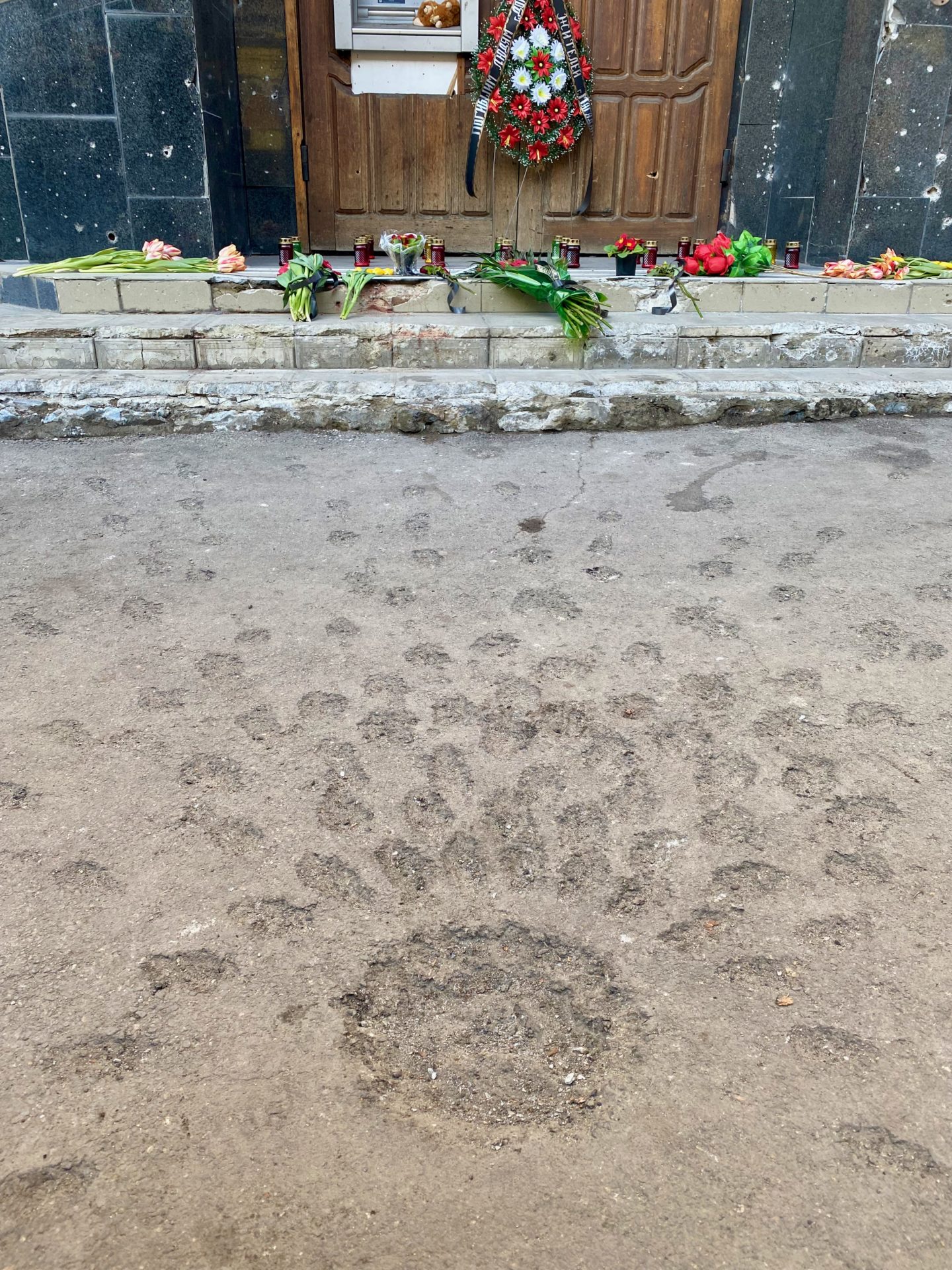
Nobody knows exactly how many there are, but official figures say there are about 700, nobody believes it, and there is talk that in Mariupol alone there may be close to 5 000. It is also known that they are clearly fascists and among them there are several foreign mercenaries, from the USA, Western Europe, Georgia, Russia and elsewhere. They have taken the entire civilian population hostage, they do not let anyone leave and shoot anyone who tries to leave the city. Dozens of civilians are already for weeks in basements, many for a long time without food and water and under collapsed buildings. Casualties may number in the tens of thousands, no one knows. The city is completely surrounded by Russian and Donetsk troops, street fighting continues. The Ukrainian army practically every day is trying to organise rescue of its commanders with helicopters, which are being shot down by Russian fire every time. It is rumoured that they are trying to evacuate American and British military instructors. The world press continues to lie about Russian barbarism.
In the square of the capital of the other rebel republic, Lugansk, there are several points of interest for the visitor: one of them is the government building, which on 2 June 2014 was attacked by two Ukrainian planes. Eight people were killed by the missiles, including the Minister of Culture, and 28 more were wounded. The government representative in Kiev said at the time that it was an “explosion of the air conditioning in the building”. There is also a memorial to Russian journalists killed near Lugansk in 2014, a photo gallery of fallen fighters, defenders of the republic, and the monument to the Ukrainian national poet Taras Shevchenko who seems to look at this madness from another time, almost the only reminder of our great internationalist Soviet past in the midst of today’s mediocrity.
And there is also a small improvised photographic exhibition on the atrocities of the Ukrainian Nazis in Donbass. With the advance of Russian and republican troops into the territory that had recently been under Ukrainian control, new Nazi crimes are uncovered. There is a detailed register of terrible finds, human remains with traces of torture, fascist symbolism and other things that generate so much indifference and distrust among the media of the “democratic world”. It is not about justifying or judging this war, it is about understanding several of its whys and wherefores, what the western press simply hides. It is also to understand, why the inhabitants of Donbass ask the Russian soldiers, please don’t stop.
You have to step on the land of Donbass to feel things that you do not feel from Moscow or from Kiev. To see that fascism is no exaggeration. And being absolutely anti-war, to ask yourself again and again these fucking questions: Would peace really be peace, is peace possible with a government that made all this possible, would there really be another way, … And then to say goodbye with a look at the tanks still advancing towards the West and to take a breath of Donbass air before returning to this other parallel world dominated by the collective Goebbels of the media.


